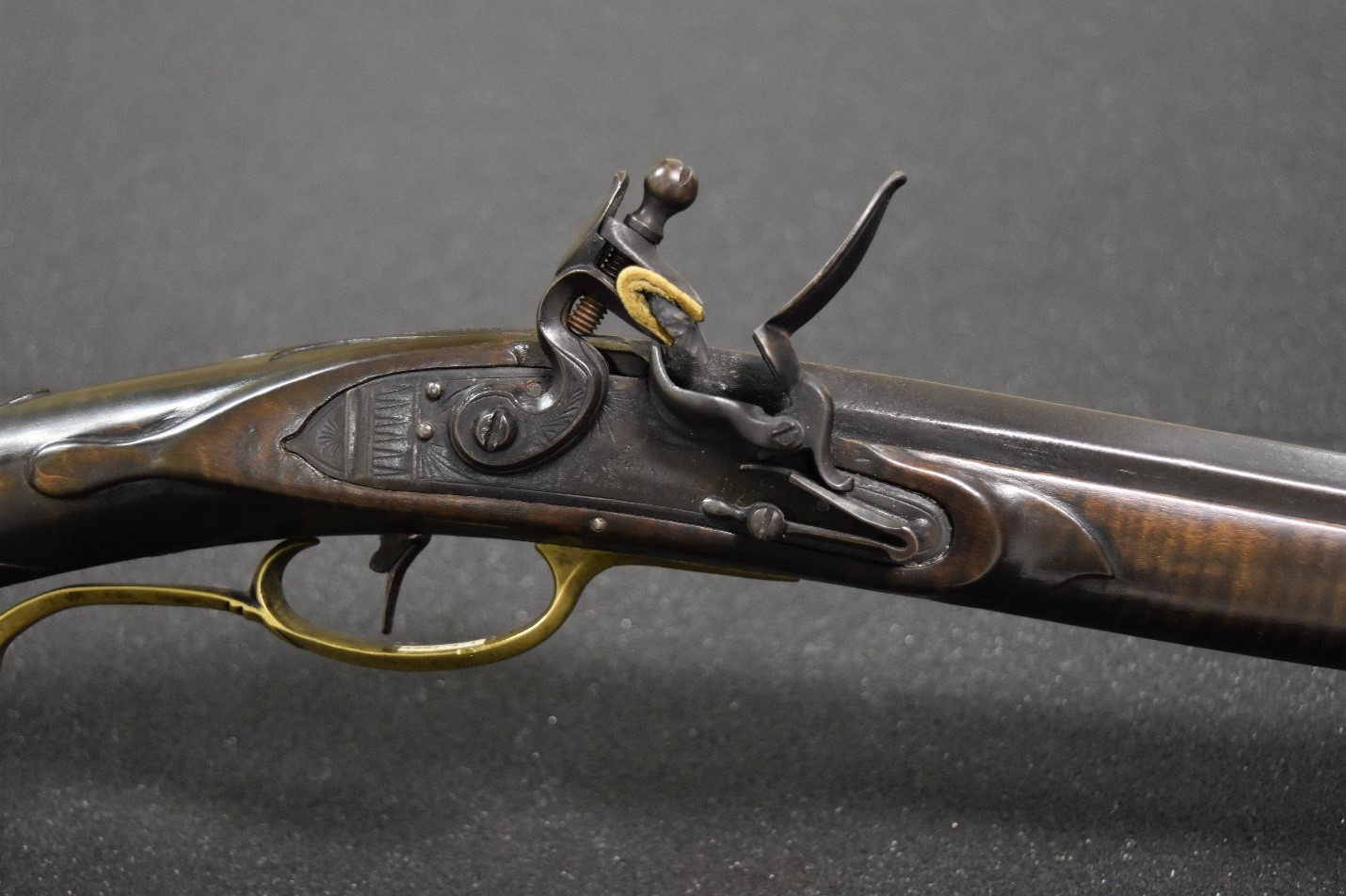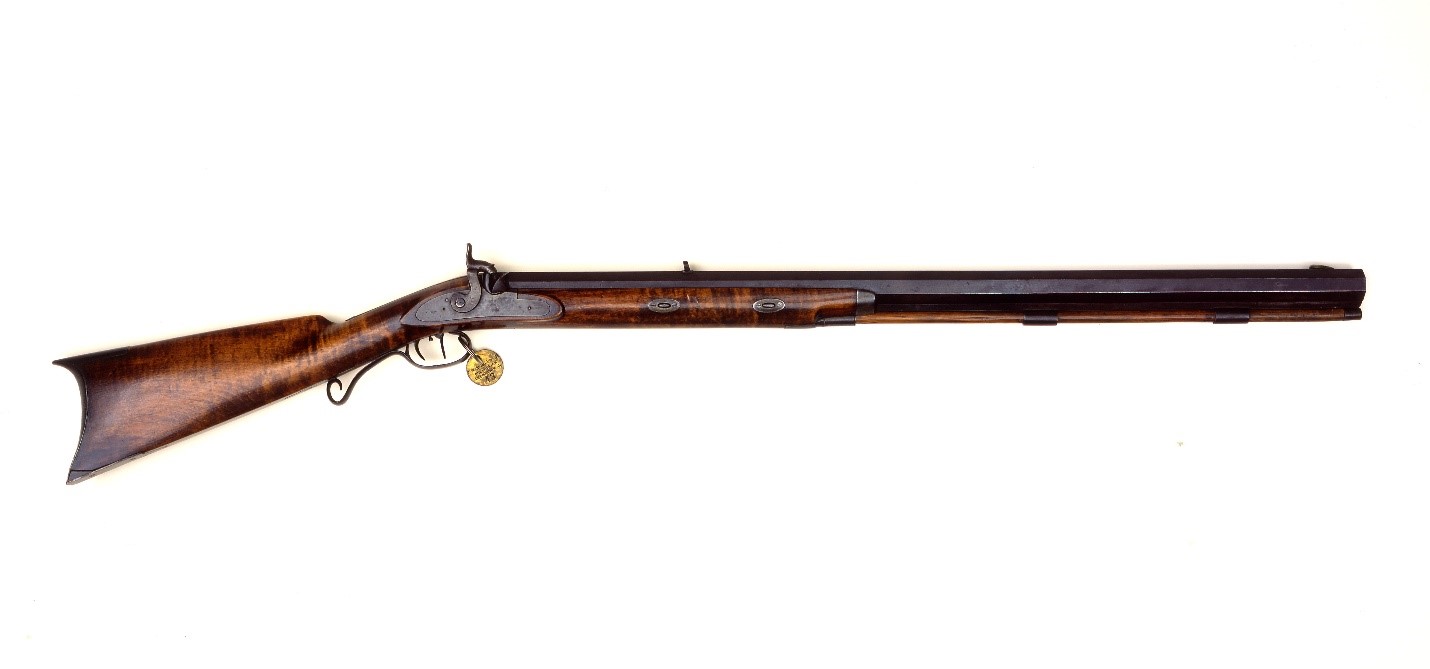
John Colter wasn’t about to lose his gun.
The now-famous mountain man was travelling on the Lewis and Clark Expedition in May of 1806 when his horse slipped and fell during a difficult, deep-snow trek over the Bitterroot Mountains in the Idaho panhandle. Man and horse fell into a stream, where they were washed for a “considerable distance” by the icy, rushing water, according to historian Burton Harris.
Colter sustained no serious injuries, but he lost his blanket to the stream because he refused to let go of his rifle. As Harris explains, “At this stage, a gun was of far more value than a blanket, even though it was early spring in the mountains.”
For America’s mountain men in the early decades of the 1800s, firearms were synonymous with survival. Rifles and pistols allowed these bearded legends to hunt on unfamiliar landscapes and defend against attacks from both man and beast.
Colter held on to his rifle as he rushed down the freezing river because he knew he’d be in another kind of deep water without it.
The Long Rifle and the Hawken
There is some debate about the types of firearms carried by the Lewis and Clark’s Corps of Discovery, according to Danny Michael, the associate curator at the firearms museum in the Buffalo Bill Center of the West in Cody, Wyoming.
But as one of the expedition’s hunters, Colter likely carried what Michael calls an “American Rifle.” You might know it as a Kentucky Rifle, Pennsylvania Rifle, or simply a long rifle.
Michael prefers the term “American Rifle” because these types of flintlock firearms were ubiquitous in the original 13 states in the first few decades of the 19th Century.
“The early 1800s is the golden age of the flintlock rifle,” Michael said. “If you’re taking a rifle with you any time before 1850 and you’re headed west, it’s very likely it’s going to be some sort of custom-made long rifle.”

A mountain man would have opted for a long rifle due to its light weight, reliable design, and stellar accuracy. Long rifles were slender firearms featuring barrels well over 30 inches and bores in the mid-.30 to .45-caliber range. They were loaded at the muzzle with a lead ball, which was stuffed down the bore following a load of black powder and a patch.
These firearms tended to take longer to load than the muskets of the previous generation. While a soldier with a musket usually adopted the time-honored “spray and pray” aiming philosophy, riflemen wanted to place their shots more precisely. The rifled bore helped stabilize the ball, of course, but the bore was also matched more closely to the projectile’s diameter. The balls took longer to ram down the bore, but the rifle’s accuracy improved tremendously.

These rifles were so accurate, Michael says, that mountain men in the early 19th Century probably thought in similar distances to hunters today. With a notch-and-post iron sight and ball ammunition, their maximum range was limited to about 400 yards, but anything in the 100-200 range was doable.
And mountain men were just as finicky about their triggers as us.
“When folks talk today about having a clean trigger pull or tuning their trigger, that was a common thing back then as well,” Michael said. “They knew how to make a really light trigger and about its impact on accuracy.”
Michael said that modern-day reproductions of these rifles experience a failure-to-fire rate between 20 and 25%. Believe it or not, still-operational original rifles are somewhat more reliable than reproductions, according to the writers and historians Michael consulted.
As white settlers expanded west, they gravitated towards shorter rifles with heavier barrels, larger diameter bores (.54 to .56 caliber), and percussion cap locks. These later rifles usually weighed about 14 pounds, while long rifles clocked in between 7 and 10 pounds.
The Hawkens Brothers developed the most popular rifle of the mid-19th Century while working out of their St. Louis shop between 1815 and 1858. Jacob and Samuel Hawken’s iconic design became known as the “plains rifle,” and the National Firearms Museum calls it “the mountain man’s inseparable companion.” A number of famous mountain men carried this type of rifle, including John Johnston (more on him later).

Michael speculated that settlers adopted these rifles because they began to recognize that a heavier barrel would produce better accuracy, and they needed a larger projectile to take down big game like grizzlies, buffalo, and elk.
A Hawken rifle cost between $20 and $30 ($560 to $840 in today’s currency), and any rifle from a reputable gunsmith would have cost about the same or a little less. If given proper care, a rifle could easily last for a person’s entire life.
Two Rifles and a Pistol
Real-life mountain men like John Colter, Jim Bridger, Seth Kinman, Jedediah Smith, and John Johnston were known for being handy with a gun, and they all adopted some version of the long gun or the Hawken rifle.
Jim Bridger, for example, carried a Hawken rifle for many years, and it became the basis for a 1955 film about him, “The Gun That Won the West.”
Some of these firearms have survived to this day. Michael was careful to point out that the provenance of any 19th-century firearm can be difficult to confirm with certainty, but there are many rifles attributed to famous mountain men in private collections and museums.
The Cody Firearms Museum is home to one such rifle—John Johnston’s .56-caliber Hawken.
Johnston is the real-life mountain man whose life formed the basis for the fictional Jeremiah Johnson. John “Liver-Eating” Johnston (maybe the best nickname ever) was a teamster, trapper, hunter, guide, scout, and trader who lived in Montana and California in the mid-1800s. His exploits fighting Native American warriors became the stuff of legend, but like all mythical mountain men, it’s tough to parse fact from tall tale.
Johnston’s rifle is from St. Louis and it features a short, heavy barrel, a percussion cap lock, and simple iron sights.
“It’s a pretty standard, well-worn gun. It looks like a typical Hawken,” Michael said.

Johnston’s gun was also outfitted with a set trigger. Similar in function today’s set triggers, the front blade could be pulled to “set” the trigger mechanism and lighten the pull of the rear blade to mere ounces. Set triggers were common in the 1800s and hunters valued them for precision shooting at long distances.
The Cody Firearms Museum also has a pistol attributed to Jedediah Smith. Smith was a Rocky Mountain explorer in the early decades of the 19th Century who most famously discovered the South Pass used by pioneers to cross the Continental Divide.
Smith’s pistol is an English-made flintlock with a .62-caliber bore, but it probably featured a percussion lock when Smith was using it.

Michael believes that Smith used it for protection just as hunters use handguns today.
“If you’re hunting in the flintlock age and you encounter a grizzly, at best you might have two shots,” Michael pointed out. “It’s the equivalent of today’s hunters carrying a handgun along with a rifle.”
Other firearms attributed to famous mountain men are still floating around in private collections—and sometimes they’re offered for sale.
In 2018, Rock Island Auction sold California mountain man Seth Kinman’s rifle for a cool $15,000. Kiman used the .68-caliber, percussion cap piece to hunt grizzlies in the Golden State, and reportedly had to reconstruct his stock after a bear chased him up a tree and destroyed it.
The gun was also said to have been used at the Battle of New Orleans in 1815. It features the euphemistic inscription, “Gave many an Englishman the belly ache from off the cotton bales at New Orleans, January the 8, 1815.”
The rifle can be seen in many images of Kinman. It even appears in a drawing being held by Abraham Lincoln in an image of the president.
Final Shot
John Colter survived the Lewis and Clark Expedition and went on to become a trader, trapper, and explorer of the region that would later become Yellowstone and Grand Teton national parks.
He wouldn’t have gotten far without his firearms. Useful for both hunting and defense, these reliable old muzzleloaders gave mountain men the edge they needed to survive on an unforgiving landscape—and blaze the trail for the pioneers who came after them.
Feature image via Cody Firearms Museum.





Conversation